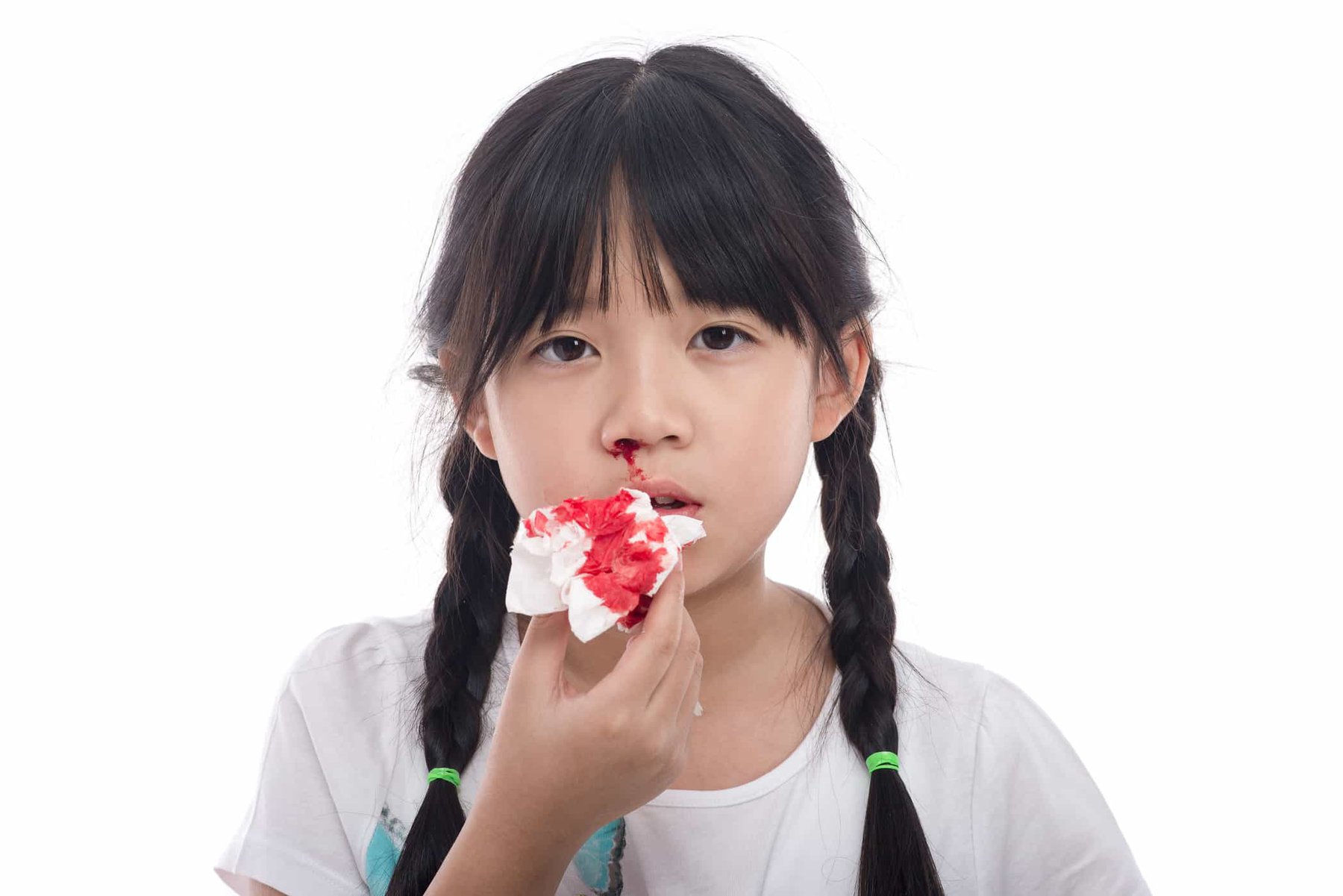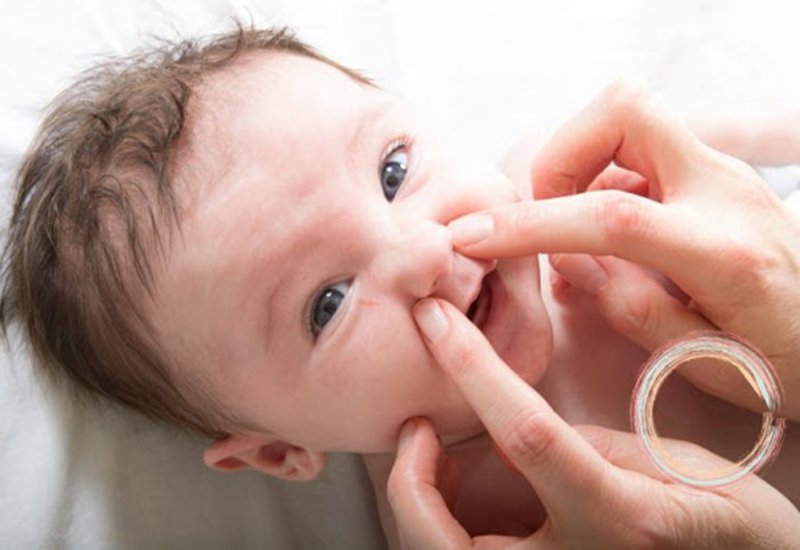Nosebleeds in children can have many causes
The article is professionally consulted by Master, Doctor Truong Thanh Tam - Pediatrician - Department of Pediatrics - Neonatology - Vinmec Danang International General Hospital. Dr. Tam has 15 years of experience working in the field of Pediatrics.
Nosebleeds are a common health condition, especially in young children. When encountering this situation, parents tend to stop bleeding by all means, but in most cases, incorrect and ineffective hemostasis techniques can even cause unnecessary complications for the child. .
1. What is a nosebleed?
Nosebleeds (also known as nosebleeds) are bleeding from the lining of the nose before or from the back of the nose down the throat, appearing often in children, especially children aged 3-8 years old. Due to the distribution of blood vessels in the nose, most of the cases of nosebleeds have the bleeding point in the anterior part of the nose while only about 10% of the nosebleeds are in the posterior. Bleeding is more common in the morning than at other times of the day and usually occurs when the weather becomes cold and dry.

Chảy máu cam thường xảy ra vào buổi sáng
2. Why do nosebleeds often happen?
Determining the cause of nosebleeds is not simple because there are many possible causes for this condition, occurring separately or together. Trauma is one of the main causes of nosebleeds, which can be caused by a strong collision when falling, fighting or simply by a child picking or blowing his nose incorrectly. Besides, there are a number of possible causes of nosebleeds such as:
Blood vessels are too sensitive and can burst when the weather is dry, when using heaters, air conditioners for a long time Allergies, infections in the nasopharynx and sinuses Nose picking or other local trauma Blows the nose too forcefully The child inserts a foreign object into the nose such as a bead or a battery Struggling when passing stools constipated Constipated nasal septum Breathing oxygen through a nasal cannula Side effects of anti-inflammatory drugs, nasal sprays Fracture of the nose or skull base Pathology Coagulation disorders Benign or malignant tumors.
Blood vessels are too sensitive and can burst when the weather is dry, when using heaters, air conditioners for a long time Allergies, infections in the nasopharynx and sinuses Nose picking or other local trauma Blows the nose too forcefully The child inserts a foreign object into the nose such as a bead or a battery Struggling when passing stools constipated Constipated nasal septum Breathing oxygen through a nasal cannula Side effects of anti-inflammatory drugs, nasal sprays Fracture of the nose or skull base Pathology Coagulation disorders Benign or malignant tumors.

Có nhiều nguyên nhân dẫn đến chảy máu mũi ở trẻ
3. How to handle children with nosebleeds?
When the child has a nosebleed, the child should not lie down on the bed or tilt his neck to stop the bleeding like everyone else does because it does not bring effective hemostasis and causes the child to have bloody stools due to swallowing blood flowing from the nose. down the throat. Moreover, this also makes it impossible to accurately assess the level of bleeding toxicity to have appropriate treatment and take the child to the hospital. Need to reassure and comfort the child to avoid panic and help the child cooperate better, after the child has calmed down, take the following steps:
Ask the child to blow his nose gently to remove the blood clots that have formed inside the nose, skip this stage if the child is too young Place the child upright, head and neck slightly forward. This is a position to help prevent blood from flowing down the throat, to avoid vomiting and diarrhea. Use your index finger and thumb to squeeze the sides of the nose (the soft tip of the nose) of the child, do not squeeze the bridge of the nose because of this. won't help stop bleeding, also don't press on one side of the nose even if the machine is bleeding from one side Squeeze the nostrils for 10 minutes, don't release your hand too often to check if the bleeding stops, it takes time to form a blood clot so releasing your arm too soon or too often will cause bleeding to last longer.
Ask the child to blow his nose gently to remove the blood clots that have formed inside the nose, skip this stage if the child is too young Place the child upright, head and neck slightly forward. This is a position to help prevent blood from flowing down the throat, to avoid vomiting and diarrhea. Use your index finger and thumb to squeeze the sides of the nose (the soft tip of the nose) of the child, do not squeeze the bridge of the nose because of this. won't help stop bleeding, also don't press on one side of the nose even if the machine is bleeding from one side Squeeze the nostrils for 10 minutes, don't release your hand too often to check if the bleeding stops, it takes time to form a blood clot so releasing your arm too soon or too often will cause bleeding to last longer.

Bóp chặt hai cánh mũi trẻ trong 10 phút để máu ngừng chảy
A cold compress or a cool towel can be placed on the nasal cavity to help the blood vessels in the nose shrink to slow down the bleeding Instruct the child to spit out blood accumulated in the mouth Give the child cool water to drink to relieve stress and remove the smell of blood in the mouth After 10 minutes check to see if the bleeding has stopped. In case the bleeding does not stop after 20 minutes of first aid, the bleeding is recurrent, the bleeding is rapid or the blood loss is a lot (more than a cup is full), the child feels weak, tired, dizzy, the child should be taken to the hospital. medical facilities for full monitoring and timely treatment.
For children to be healthy and develop well, it is necessary to have a nutritious diet in terms of quantity and quality balance. If children are not provided with adequate and balanced nutrients, it will lead to diseases of excess or lack of nutrients, which adversely affect the comprehensive development of children in terms of physical, mental and motor skills.
Children who do not eat properly are at risk of micro-mineral deficiency causing anorexia, growth retardation, malabsorption,... If they notice the above signs, parents should supplement their children with products. The supplement contains lysine, essential micro-minerals and vitamins such as zinc, chromium, selenium, and B vitamins to help fully meet the nutritional needs of children. At the same time, these essential vitamins also support digestion, enhance nutrient absorption, help improve anorexia, and help children eat well.
Parents can learn more:
Signs of zinc deficiency in children
Micronutrient deficiency and failure to gain weight in children
Please regularly visit Vinmec.com website and update useful information to take care of your child. Take care of the baby and the whole family.
For children to be healthy and develop well, it is necessary to have a nutritious diet in terms of quantity and quality balance. If children are not provided with adequate and balanced nutrients, it will lead to diseases of excess or lack of nutrients, which adversely affect the comprehensive development of children in terms of physical, mental and motor skills.
Children who do not eat properly are at risk of micro-mineral deficiency causing anorexia, growth retardation, malabsorption,... If they notice the above signs, parents should supplement their children with products. The supplement contains lysine, essential micro-minerals and vitamins such as zinc, chromium, selenium, and B vitamins to help fully meet the nutritional needs of children. At the same time, these essential vitamins also support digestion, enhance nutrient absorption, help improve anorexia, and help children eat well.
Parents can learn more:
Signs of zinc deficiency in children
Micronutrient deficiency and failure to gain weight in children
Please regularly visit Vinmec.com website and update useful information to take care of your child. Take care of the baby and the whole family.
Bài viết này được viết cho người đọc tại Sài Gòn, Hà Nội, Hồ Chí Minh, Phú Quốc, Nha Trang, Hạ Long, Hải Phòng, Đà Nẵng.





